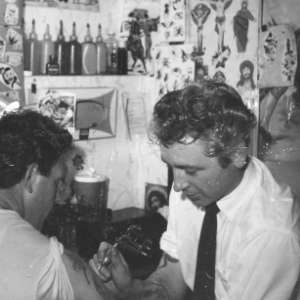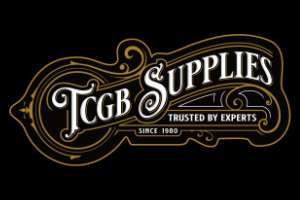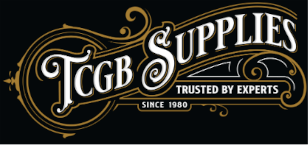
Photo Circa early 1960's
Terry Wrigley
Tattoo artist, magazine editor, writer and President of the National Tattoo Club Terry Wrigley was born at Mossley, Manchester, England, on February 25th 1937, and before him, there were no other members of his family involved in the tattooing business.
Terry first became interested in tattooing when he was a young boy in 1939 after seeing an article about British tattoo artist George Burchett in the magazine The Illustrated. It not only talked about the most famous British tattoo artist of his day but also showed a design of a native American Indian head that Burchett had tattooed on a guy's back. And it was this more than anything else in the article that impressed a young Terry, as his great love at the time was drawing, and Terry even considered he would even become a cartoonist in later life, which he very nearly did.
First, though, there was the small matter of finishing his school days before doing his bit for the Queen and country by having to do national service. Terry soon found himself in Egypt, where he gained his first tattoo and tattooing tools during his stay in this north African country. The local tattooist who tattooed Terry also sold him a bottle of black ink and a set of worn-out needles stuck on an old stick. Terry did not worry too much, though, as this enabled him to do a bit of barrack room tattooing on his fellow military buddies.
1955 saw goodbye to the service, and Terry went down to London to take up a job offer of becoming a cartoonist with a trade magazine for a cinema company. But this didn't last long because he was starting to get the urge to do more tattooing and bought some better equipment from a tattooist he knew. And after which, Terry set off to do a bit of tattooing in Germany. Following some advice from an old-time tattoo artist, who told Terry that he should not tattoo in the place that he would later make his permanent home. Then, he wouldn't have to put up with his early work returning to haunt him.
1957 saw another couple of moves, the first being to the English country garden town of Kent in southern England, before heading back to his hometown of Mossley, Manchester. It was also around this time when Terry married Shirley, and tattooing even figured on his wedding day as he tattooed his best man Alf Chisnall in their hotel room an hour before the ceremony.
Terry tattooed at his home in Meiklehurst Road, Mossley, before opening his first studio proper in Ashton, Manchester, tattooing in the evening after his day job at Carbrook Mill. Later Terry started to tattoo the summer seasons in Blackpool, England, with Prince Eugene Lawrence, and the pair worked the seaside town's beachfront for quite a while before parting company. 1961 saw Terry joining British tattoo artist Basil Javis in the famous English holiday resort town of Southend-on-Sea, Essex. He tattooed the summer months before returning home to work the winter months in Ashton.
1965 saw a return to Blackpool for Terry, this time tattooing with Jimmy Gould, and it was while they were there the pair heard that tattooing legend Bert Vallar of Glasgow, Scotland, was going to retire and shut up his shop for the last time. Terry thought about opening a studio in this Scottish city in the early 1960s. But, out of respect, he decided against it, as Vallar was already tattooing there.
Until the 1980s, there was an unwritten rule in the UK that no one would open a tattooing studio within ten miles of an already established tattoo artist. Of course, those days have long gone, as it seems at times there are more tattoo artists than people getting tattooed in certain parts of Great Britain, but Terry has always stuck by his beliefs.
Terry and Jimmy saw this as an ideal opportunity and moved lock, stock and barrel to 793 Gallowgate, Glasgow, in the city's East End. But, alas, Jimmy didn't settle or to be more precise, he didn't give it the time a new beginning requires and stayed for only about a month before moving back to England.
Terry, of course, made Glasgow his own and became one of the best-known tattoo artists in the world. He also became the President of many tattooing clubs and associations, wrote some of the best articles on the art that have ever seen the light, and did more than anyone in getting tattooing to where it is today. Unfortunately, Terry one of the tattooing greats, was an even better man with a fantastic character who died on May 17th 1999, leaving Shirley his wife of 42 years, five children and seven grandchildren.
footnote
Over the years, Terry Wrigley received many accolades and awards for his dedication and love for tattooing. He was inducted into the San Francisco Tattooing Hall Of fame on April 27th 1999. Terry was also a member of Hanky Panky's Tattoo Hall of Fame in Holland. He also was given the Bob Shaw Golden Age award at the National Tattoo Association's Nashville convention in 1995. After, as a true mark of respect from his peers, the Bob Shaw award was renamed The Terry Wrigley Award Of Appreciation. Terry went on to take home this (his own) award to Scotland in 1998 after he was awarded it at the National Tattoo Association Los Angeles convention.
By Paul Sayce
Copyright
https://www.terrystattoostudio.com/



He was the fastest tattooist I had come across, using a five-liner outline and a six-flat for colouring and shading. The machine had a clip cord straight to a car battery under the counter. The outline flew on, solid shading with dots coming off the end, and it looked so easy how the colour went into the skin.
There was no foot switch. The machine had a bright blue spark, no capacitors, and the springs were cut from steel banding. I used to work in a timber yard, and we used that banding to tie timber stacks. I scrounged a roll of banding strip from a mate that still worked at the timber yard. and sent it up to Terry weeks later. It was softer than normal machine springs and did not last as long, Terry had a large tin of springs cut and holes punched with a Whitney punch, two holes for the back spring and one for the front spring.
Terry explained that he spread the six flat needles sideways to spread them out, the colour just flew in, and the black shading was solid like the old-time tattooers. Many tattooists back then had several machines, one for each colour. Some used glass test tubes in a rack to store the machines. Terry used water feeders that go in bird cages. He got them from a local pet shop. Being plastic and with a larger diameter than glass test tubes, they did not break, and the machine tubes fit in easier.
Great memories. I came away with a copy of How to do good tattooing by Cindy Ray. Still have it now with a copy of a short tattooing course from the Cindy Ray collection.